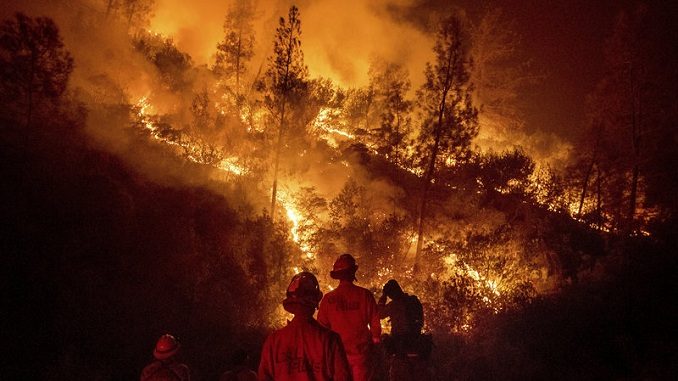
The death toll from the devastating fires that ravaged Northern California rose to 56 as the remains of eight individuals were found on Wednesday when authorities poured into the ruined communities in an effort to track down 130 people who are unaccounted for after the blaze.
The majority of people listed as missing on the Butte County website earlier on Wednesday are senior citizens, most of whom live in Paradise, a town of 27,000 mainly retiree residents. According to Butte County Sheriff and Coroner Kory Honea, about 461 people and 22 cadaver dogs are searching the town and other communities.
“We’re moving as fast as we can. It will take as long as it takes,” the sheriff said in response to a question regarding the timeline for the search. “It’s an important thing that we get right. And I understand the issue (of residents wanting to return to their properties), and I’m balancing the competing interests.”
He added that the sheriff’s department will begin taking DNA samples from people who are missing a family member on Thursday.
The Woolsey Fire in Los Angeles and Ventura counties, another fire ravaging the state, has killed at least two people and destroyed almost 500 homes. Firefighters there continue to battle the blaze.
The threat from Camp Fire, as the fire that devastated Northern California is unofficially called, has now minimized but other dangers still remain, said Paradise Mayor Jody Jones.
She also stressed that her town will be rebuilt, saying “We’re gonna come back, we’re gonna rebuild. We’re gonna make Paradise Paradise again.” Jones, however, added that people need to be patient and not rush to come back because it was not completely safe yet to do so. Water service is out and power lines are down, she noted.
Interior Secretary Ryan Zinke said he wanted the focus to be on checking with families and residents in the affected areas as well as on working with state and local partners throughout the recovery phase.
“This is not just a state issue. It’s not a federal issue. This is an American issue of managing our forests,” he said.

Be the first to comment